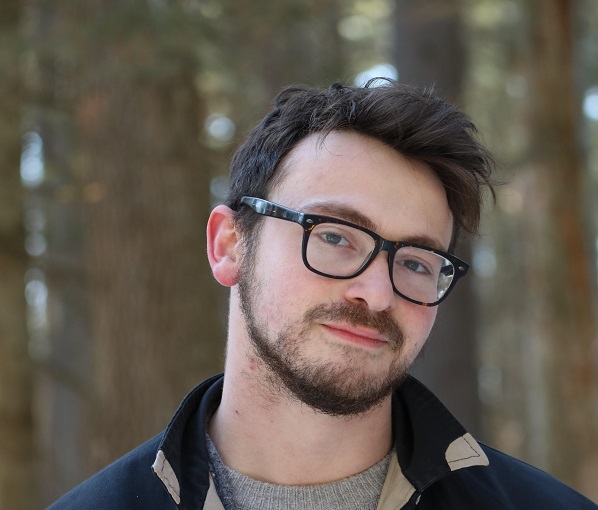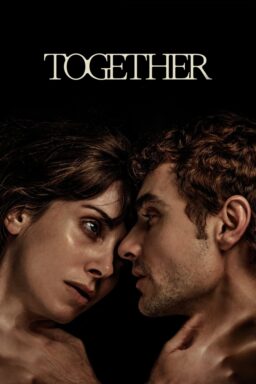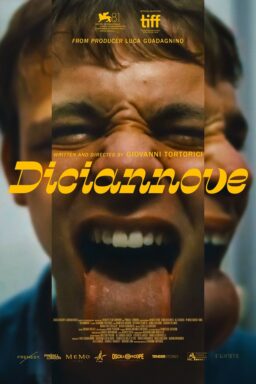Long beloved by Indian moviegoers for his uninhibited, maximalist style and awe-inspiring command of film craft, Telugu director S. S. Rajamouli found himself catapulted to greater global prominence earlier this year, thanks to the crossover success of “RRR.”
A bombastically heightened action epic set in Delhi during the early 1920s, “RRR”—or “Rise, Roar, Revolt”—follows two Indian freedom fighters who form an all-powerful bond despite operating on different sides of the British Raj during a brutal period of colonial rule. Both based on real-life revolutionaries, Alluri Seetharama Raju (Ram Charan) and Komaram Bheem (N.T. Rama Rao Jr., often abbreviated as Jr NTR) initially square off, amid Bheem’s efforts to rescue a girl (Twinkle Sharma) abducted from the tribe he’s sworn to protect by the sadistic governor (Ray Stevenson) Raju appears to serve. But they soon forge a friendship, joining forces against the British in fantastical fashion.
Produced for $73 million by D. V. V. Danayya, the three-hour “RRR” is a delirious, hyper-kinetic spectacle in which the laws of physics and details of history need not apply. Giving Raju and Bheem superheroic agility, impossible strength, and—in viral musical number “Naatu Naatu”—sensational dance skills, Rajamouli’s film so often soars beyond reality that its heroes’ eventual transformation into their namesakes from Hindu mythology—Raju into Rama, of Ramayana, and Bheem into Bhima, of Mahabharata—feels exhilarating but also somehow within the bounds of narrative possibility.
Building on Rajamouli’s past larger-than-life features—like the two-part “Baahubali,” another historical epic, and “Eega,” about a murdered man who seeks revenge once reincarnated as a house fly—“RRR” is his biggest to date. First theatrically released in March, the film broke box-office records in India and earned $140 million in its initial release, including $14.5 million from U.S. theaters. Still, it wasn’t until June, with a one-night #encoRRRe event—following its global Netflix debut, in Hindi—that “RRR” exploded stateside and on social media, gaining particular attention for energized responses by crowds watching it in theaters.
“In India, we are used to crowds going ballistic during screenings: shouting, laughing, clapping, dancing, throwing confetti into the air,” says Rajamouli. “But to see that happening outside my country, outside my languages, is an incredible feeling. I’d never even dreamt that ‘RRR’ would resonate with people across cultures, across countries. I never expected that.”
Rajamouli is currently touring various U.S. cities with “RRR,” appearing at fan screenings to participate in Q&As and bask in the euphoric audience reception that’s already part of the film’s fast-forming legend. U.S. distributor Variance Films is hoping to harness its momentum by launching an Oscar campaign and is asking voters to consider “RRR” in all categories, including Best Director and Best Picture.
A few days after appearing in Chicago for a sold-out screening at the Music Box Theatre—where he set the Internet ablaze by announcing that his father and story writer V Vijayendra Prasad is in early stages of working on the story for a planned “RRR” sequel—Rajamouli took time to speak with RogerEbert.com about working with Telugu mega-stars Ram Charan and Jr NTR (whom he refers to as Tarak), executing the film’s most iconic sequences, and being inspired by the choreography of coordination.
This interview has been edited and condensed for clarity.

To see Ram Charan and Jr NTR share the screen in “RRR” is such an overwhelming display of star power; they’re both immensely popular in India. What was it like to bring these actors together on screen, and how did their distinct identities as performers elevate the energy on set?
Many people outside of my state might not be aware of this, but Ram Charan and Tarak both are big stars who come from traditionally opposite film families. They belong to different communities, and their fans are constantly at loggerheads with each other. For the past 25 years, even their fathers were considered to be from opposite groups. But, luckily for me, outside their professional lives and in their personal lives, Tarak and Charan are very close friends. I’ve worked with them before, and I know their strengths, so I know what they’re capable of.
I had this idea of making a multi-starrer for a long time. After “Baahubali 2” was over, and I was thinking about what I should do next, I again had this idea of doing a multi-starrer, and the first two names that came to my mind were Tarak and Charan. Then came the storyline. I thought, “What if I can make it a fictional story about actual freedom fighters?” They fit into that exactly. Tarak, apart from his star status, has that innocent, he-can’t-hide-anything kind of face. And Charan, apart from his star status, has those eyes, which feel like, “Oh, this guy is hiding something very painful in his head and in his heart.”
You could say that Tarak and Charan play perfect opposites, but there’s also this lovely, equalizing balance between them in the form of their friendship. In Chicago, you spoke about the importance of “unapologetically” showing male friendship on screen, and I’m curious as to whether you could expand upon the relevance of that, both to “RRR” and perhaps to the wider Telugu film industry.
One thing I have noticed, once social media exploded and various people started commenting on various topics in any art form—I’ll talk about film, because that’s my area—filmmakers started taking [those comments] seriously and trying to be politically correct about everything. If you’re trying not to offend this person and not to offend that person, in essence, you’re losing the flavor of your story. If your story is to say something, you need your actors or your incidents to be a certain way, so that it arouses the emotions of the audience.
You can’t be continuously worried about what people are going to say. That would be a very dishonest way of filmmaking. As a storyteller, my allegiance is to the story, not to anyone else. Everyone else comes later. Nowadays, I see two guys afraid to even put their hands over one another’s shoulders. They worry about what people might think. What the bloody hell? You’re friends! Every gesture doesn’t need to have a meaning to it. You’re friends. What’s wrong with showing that? I don’t know. If my scene demands that a setting has to be a certain way, and that the actors have to be a certain way, they will be that. The emotion has to get across to the audience.
And the emotion of “RRR” is overpowering. Watching it with a crowd, you feel people resonating deeply with these characters and this story. I’m curious how you build both character and emotion through choreography, whether your actors are fighting or dancing.
An actor expresses through his face but, apart from that, his body language conveys so much emotion. A human body is a beautiful piece of engineering, and the body being in a certain way, in a certain posture, in a certain stretch or squeeze, enhances the emotion a lot more when rightly done. Whether it is fight or dance, it is essentially making the human body go through those poses. It’s choreography.
I wouldn’t say there’s a kind of grammar, because I wouldn’t be able to substantiate it, but there is a way that bodies express, which enhances emotion. That’s one of the reasons why I like action. I like dance, but my principal interest is in action set pieces and making human bodies go through extreme motion, which really enhances emotion. At the core of it, I want my audience to feel a certain emotion through that.

What you’re describing here also heightens the film’s reality, to the degree that you come to see Raju and Bheem—though they’re also based on real-life people—as mythological figures. The action and dance sequences are part of that, but so is the emotional intensity of your actors. How did you direct Charan and Tarak to that heightened place of emotion?
The first job is to create a scene where the character is going through emotional turmoil. And by narrating the story in the first place, or narrating that scene before we shoot it, you remind the actor why he’s in this place, what led him there, and also telling him, for example, “This is an action sequence. You have to go in with an [emotionless] face, and you are going to arrest your friend.” But we explain to him as well what is going on in his mind: “What are the thoughts that are running through the character’s mind at that particular point? Why is he doing this? Is his heart rebelling against his mind, or are they in sync?”
Getting the actor into the mindspace of the character is what I do in the initial stages of story narration. When we get into the actual shooting of the sequence. I have one conversation with my actors and tell them about the emotional state of the characters. And the actors have to be great actors in the first place. Otherwise, however much you narrate, it’s not going to happen.
One of the areas in which “RRR” excels is in balancing CGI with live-action elements. What’s the secret to integrating CGI in a way that feels dynamic, fluid, and also grounded and real, even when you’re throwing leopards or motorcycles through the air?
There are many secrets. As directors, we must be very careful about making sure that the actors who are performing in those scenes—whether they’re acting or reacting, whether they’re the main actors or everyone else—believe in the scenes. They can’t simply go through the motions. If I tell an actor there’s a tiger in the room, and they should be afraid of it, the actor should first understand that, then give that fear. Their fear can’t be of a ghost or of a murderer standing there with a weapon. It has to be the fear of an animal beside them.
All three are different. None are the same. There are subtle differences in body language—in your face, that you show—when you unexpectedly see a wild animal, by your side. If we’re talking about animal sequences, the amount of care we took for everyone to feel that there were a bunch of wild animals running amok was incredible. The amount of work that scene directors do in going around and telling each and every extra and junior artist how to react, how to run, how to behave …
All that, put together, makes it believable. It’s not just about having a great CGI tiger. That also has to be done, which is incredible work by the VFX artists. But everyone must be coming together. There should be a great CG-animated animal, there should be great actors doing their jobs, and there should be great lighting, FX, smoke, fire, and everything else coming through to make it feel real.
That image where the animals leap from their cages on the back of the truck has become one of the film’s most iconic. How did you approach filming that?
I won’t be able to get into the logistical complexities. That is for the production side to deal with. I won’t be sympathetic to their worries when I’m doing a scene like that. I say, “This is what I want to get, and you will work your asses off to get me to that point.” There is coordination of tens of departments and hundreds of people. Coordination itself is a choreography, of everyone putting on their costumes, coming in and doing their jobs. The production department, the lighting department, the crew … Everyone is doing something to assist in getting it right.
The most important thing, though, is the buildup to that moment. There are so many pawns planted in the beginning. A tiger has been captured; it’s nodding off, and Bheem says sorry: “I’m using you for my purpose. Please forgive me.” For what he’s using the tiger, you don’t know. In the middle of the movie, you see two big pieces of meat being carried and dumped into a hole, and you don’t know why. “What’s with that meat?” If you listen carefully, you can hear a tiger roar there; some people get it, some people might not get it.
When Tarak and Jenny enter the bungalow for the first time, you see the two gates, one a wooden gate and secondly an iron gate that opens with a clanking sound. You don’t know the relevance of that. By the interval, Bheem has said he’s going to get Malli from the bungalow; there are thousands of people there, so you don’t know how he’s going to do that. The truck comes and stops; two torches are thrown inside. Someone’s sitting in a tree. To a slow, suspenseful background score, the wooden door is closing as the iron door is being opened. As the iron door is being opened, the guy in the tree signals; he jumps on the truck.
You know something is going to happen, but you don’t know what it is. They go through, hit a car, and suddenly the tarp is coming up. The people celebrating turn around, and then comes the grand moment of the animals coming out, with Bheem jumping out with the two torches. You’re conditioning the audience to shout, to have an involuntary reaction of awe. I love creating those kinds of moments. And when I see the reactions of the audience in the theater? Oh my god! All the effort that’s been put in is worth it.

In Chicago, you discussed the bridge-rescue sequence that brings Raju and Bheem together and revealed you achieved 90 percent of that with miniatures. Tell me about that process.
Consider the in-camera effects that have been achieved by our peers back in the 1920s and 1930s, or even before. If you compare our work with theirs, we’re still lagging behind. They did exemplary work, and even today you watch those scenes and wonder how they could have done it. That sequence would have been quite a complicated sequence to achieve, either with VFX or by going to an actual location. No government is going to give me permission to blow up an oil tanker underneath a bridge, even an abandoned bridge. The choice left was to go with VFX or go with miniatures and insert them in. Because that sequence was so complicated, we had to do it multiple ways.
The top of the bridge was one setup and a full-size part of the bridge; underneath the bridge was another full-size setup. Between the two pillars—because most of the action happens between the two pillars—and what happens in the rail section, both of those were miniatures. It was quite complicated, because we were cutting between them. There are shots where you have the top of the bridge, the bottom of the bridge, and also the middle of the bridge: a set, a different set, and between them a miniature. The combination to get the scale right, and to get the lighting right. was a logistical nightmare. I will never be sympathetic toward the production side. I pretend not to understand, so that they can get on with their jobs. [laughs] It’s a combination of the VFX supervisor V. Srinivas Mohan, production designer Sabu Cyril, and director of photography K. Senthil Kumar; those guys should take credit for getting the bridge to feel and look like a real life-size set.
The last sequence I’ll ask about specifically is “Naatu Naatu.” That scene’s energy is so joyous and propulsive, playing out through Tarak and Charan’s performances, that I was stunned to learn your actors were dancing for 12 hours a day, for 15 days.
That is what actors do, right? Whatever they’re feeling inside, they won’t show it on their faces; they will show what the audience wants to see. One emotion they were quite far from when they were performing that scene was joy. They were going through immense pain; given a chance, they would have killed me.
It was incredibly, increasingly difficult for two performers to do a dance move exactly the same. They would get the timing. The steps themselves are not complicated steps. But the style! Each actor has his own style, and both of them are trying to get to one style. It is a high-energy song, beyond the complexity of it; it needs a lot of breath power to perform again and again, until they can exactly get it right—and of course show that they’re enjoying what they’re doing. That took incredible effort from both the actors.
There is great music there [by composer M. M. Keeravani, lyricist Chandrabose, and singers Rahul Sipligunj and Kaala Bhairava,] great dancing skills from the actors, and a fantastic location in Kiev, in Ukraine. All the Ukrainian dancers were dancing their hearts out, and they also performed with such beauty. If one person should take the lion’s share of the credit, it is choreographer Prem Rakshith. He did a fantastic job of composing those steps for the actors. He understood their body language. He understood their standards. He understood my requirements. He understood the aspirations of the audience, what they would want to see from their favorite stars. To come up with steps that satisfy everyone is an incredible challenge. He worked for almost two months before we could give it a single shot, and he composed hundreds of variations of steps to get it right.
“RRR” is now streaming, dubbed in Hindi, on Netflix and in Telugu or dubbed in Tamil, Kannada, or Malayalam on Zee5.












